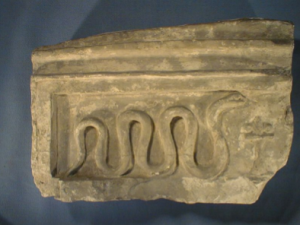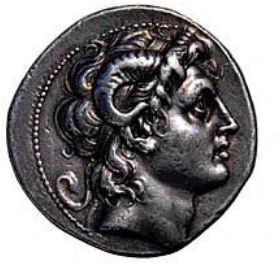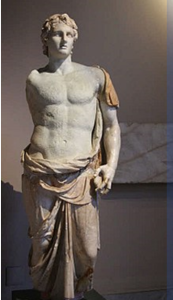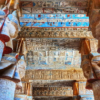The Conqueror Who Shaped History
Born in 356 BC in Macedonia, Alexander the Great was the son of King Philip II of Macedonia and Queen Olympias Of Syrian origin. Considered one of history’s greatest military commanders, he was undefeated in battle. Tutored by the Greek philosopher Aristotle, Alexander assumed the throne of Macedonia at the age of 20 following his father’s assassination in 336 BC. He subsequently united the Greek city-states to counter the Persian threat. In 333 BC, Alexander defeated the Persians, led by Darius, and conquered Syria and Palestine. He then marched into Egypt in 332 BC, ending Persian rule and initiating a new era known as the Hellenistic period in Egypt (332-30 BC). Upon his arrival in Egypt, Alexander was welcomed by the Egyptians who saw him as a liberator from Persian rule. Demonstrating wisdom, Alexander heeded the advice of his teacher Aristotle: “If you wish to be loved by the Egyptians, respect their gods.” He adopted Egyptian customs, wore pharaonic clothes, and undertook a famous trip to the Temple of the Oracle of Amun in the Siwa Oasis. This temple held great significance, as Cambyses II, a Persian king, had attempted to destroy it in 525 BC, so he went with his army until he reached a desert area before the temple. There, the Egyptian desert guide set up a trap for him and led him into the sands, in which he and ten thousand of his soldiers drowned, and none of them returned. Alexander’s visit to the oracle was seen as a validation of his divine right to rule. The priests crowned him with the headdress of Amun, proclaiming him the son of the god and thus the pharaoh of Egypt. But more importantly, the priests there told him two secrets, one for the past and one for the future. They told him who killed his father. Moreover, they revealed a prophecy about Alexander’s future, foretelling that he would become ruler of the world, a prophecy that was fulfilled within a few years. Alexander established the largest empire of the ancient world, stretching from Greece in the west to the Himalayas in the east. During his return journey from Siwa, Alexander decided to found a city on the Mediterranean Sea to connect Egypt with Greece. He chose the site of an old village called “Rhacotis” and named it Alexandria. His renowned architect, Dinocrates, designed the city based on Greek models, with two main streets intersecting at right angles and smaller streets branching off from them.
The surprise when founding Alexandria
Interestingly, the Greeks considered the agathodaemon snake a symbol of good fortune and fertility. When the foundations of Alexandria were being laid, a large snake emerged. Alexander ordered his soldiers to kill it, but as soon as it was slain, many non-venomous agathodaemon snakes appeared from different parts of the area, crawling towards the city. Alexander interpreted this as a good omen and dedicated a small shrine to the agathodaemon snake at the spot where it had been buried. The 25th day of the month of Tobi, the day this shrine was established, is considered the founding day of Alexandria. Alexandria’s strategic location on the Mediterranean Sea made it a vital trade hub, facilitating the transport of Egypt’s agricultural products, especially grain, as Egypt was at that time a storehouse for the world’s grain. It was also a storehouse for the food of Alexandria’s soldiers. After that, Alexander continued his conquests, eventually reaching India, where he died. After his death, his empire was divided among his generals. Egypt fell under the control of “Ptolemy I”, who completed the construction of Alexandria and initiated the Ptolemaic dynasty, which ruled Egypt until Cleopatra died in 30 BC.
 A statue of Alexander the Great in the Alexandria Library Museum, Alexandria.
A statue of Alexander the Great in the Alexandria Library Museum, Alexandria.
 A head of a statue of Alexander the Great, sculpted by “Lysippos”, preserved in the Louvre Museum.
A head of a statue of Alexander the Great, sculpted by “Lysippos”, preserved in the Louvre Museum.




























